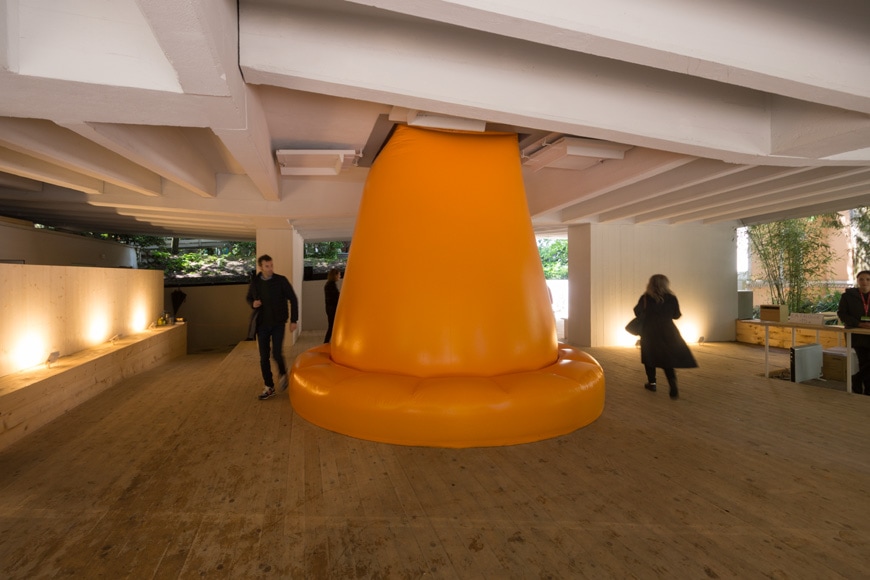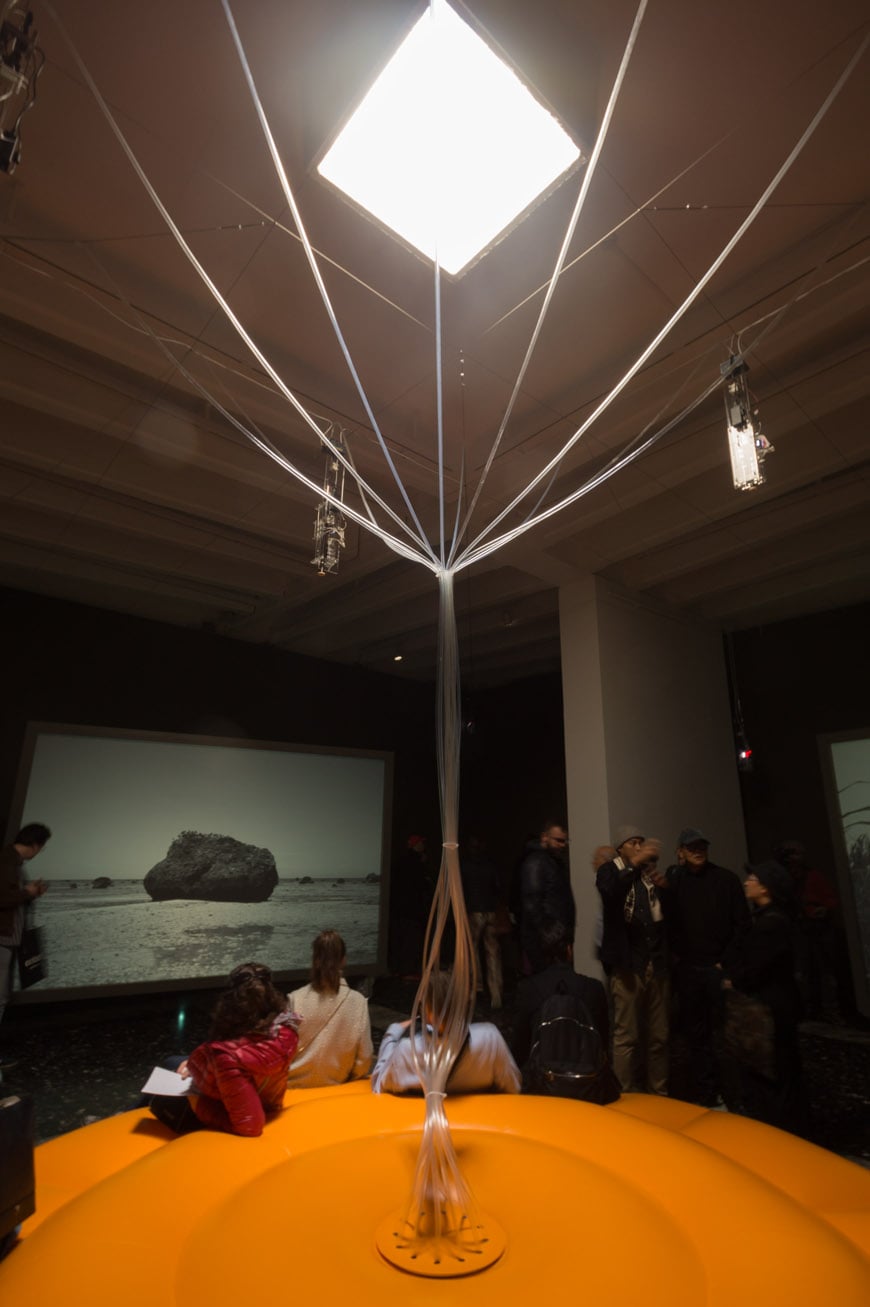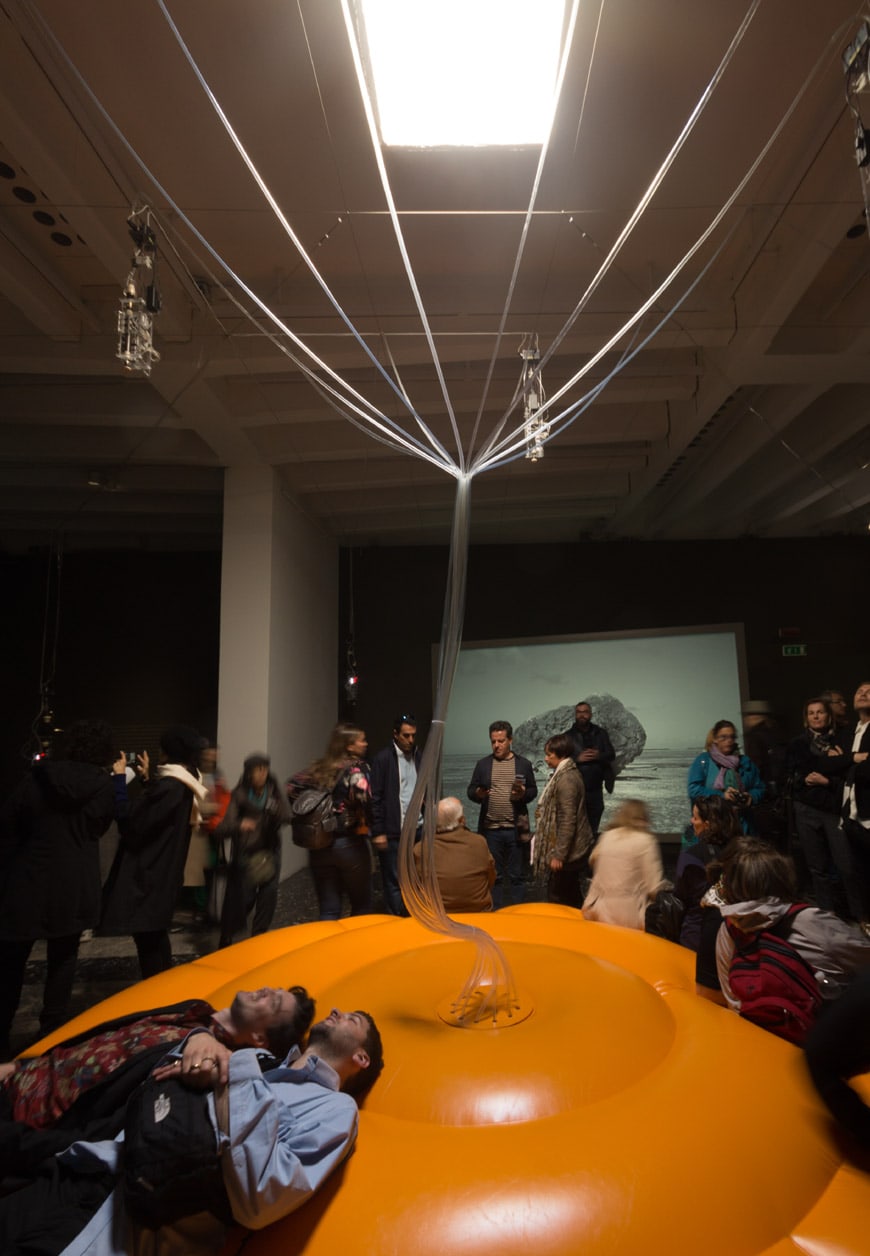“Cosmo-Eggs” – Japan at the 58th Venice Art Biennale 2019
Cosmo-Eggs is the title of the exhibition in the Japan Pavilion at the 58th International Art Exhibition of La Biennale di Venezia running from May 11 to November 24, 2019.
Cosmo-Eggs, Japanese pavilion at the Venice Art Biennale 2019, installation view; photo © Riccardo Bianchini / Inexhibit
Curated by Hiroyuki Hattori, Cosmo-Eggs presents a platform to speculate about the ecology of symbiosis and coexistence between humans and non-humans through collaborative installation by a collective consisting of four members from different fields: visual arts, music, anthropology, and architecture.
As Hattori writes: “The Japanese archipelago, which is an area that frequently suffers from natural disasters, had experienced the distortions of modernization, both natural and man-made disaster at once through the significant damages of the nuclear power plant due to the tsunami caused by the Great East Japan Earthquake of 2011. In times when we as humans have expanded the theater of urban life across the limited space of our entire world, how must we consider the significant impact that our actions have on its environment?”.
Cosmo-Eggs, Japanese pavilion at the Venice Art Biennale 2019, installation views; photos © Riccardo Bianchini / Inexhibit
A close-up view of the recorder flute installation by Taro Yasuno; photo © Riccardo Bianchini / Inexhibit
The installation is made up of video works by artist Motoyuki Shitamichi, music by composer Taro Yasuno, a new mythological story by anthropologist Toshiaki Ishikura, and scenography designed by architect Fuminori Nosaku.
At times the video, music, text, and space as a whole come together in harmonious resonance, and conversely, there are moments of dissonance when everything conflicts and fiercely clashes against one another. Through a “collaboration” that opens up a place for continuous generation and change utilizing overlaying heterogeneous creations by individuals of different areas of expertise, the exhibition serves to question the ecology of symbiosis and coexistence.
This exhibition takes as its starting point the tsunami boulder artist Motoyuki Shitamichi came across in the Miyako Islands and Yaeyama Islands in Okinawa, which he has continued to photograph over the past several years. These large natural boulders have been washed ashore from beneath the ocean. While they exist within close proximity to everyday human life, some become home to new plant life and colonies for migratory birds.
From Tsunami Stone (2015-), Motoyuki Shitamichi; photos by Inexhibit (up) and courtesy of The Japan Foundation.
Taro Yasuno presents a composition reminiscent of bird song through Zombie Music–automated sounds played mechanically on a series of recorder flutes. The balloons extending from the Japan Pavilion’s pilotis through to the exhibition room fulfill the function of lungs that supply air to the instruments.
The title Cosmo-Eggs is derived from the various myths throughout the world concerning the birth of humans and non-human existences from the Cosmic-Egg. Toshiaki Ishikura, an anthropologist who specializes in comparative mythology, references local beliefs, mythology, and folklore related to tsunamis in various parts of Asia such as the Ryukyu region and Taiwan to develop a new mythological allegory that reconsiders the relationship between humans and nature.
The Japan Pavilion, designed by Takamasa Yoshizaka, takes on a structure comprising a square floor plan and a skylight in the central roof, a hole in the floor, and four columns spirally arranged along its periphery, bringing to mind Le Corbusier’s “Museum of Unlimited Growth.” Architect Fuminori Nousaku interprets the various elements of this architecture, linking together the collection of works across different genres, and developing a reciprocal relationship between them and the architectural space to create a unified spatial experience.
Cosmo-Eggs, Japanese Pavilion at the Venice Art Biennale 2019, plan and section.
Cosmo-Eggs, Japanese pavilion at the Venice Art Biennale 2019, installation view; photos © Riccardo Bianchini / Inexhibit
copyright Inexhibit 2024 - ISSN: 2283-5474











